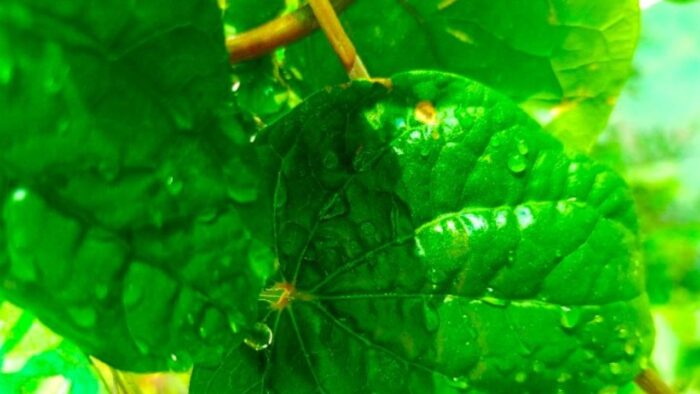In modern times, paan is associated with a bad reputation due to its association with mouth cancers. When the paan leaf - which is the tambula chewed for millenia for health benefits - is chewed with other additives, it becomes a poison.
The areca nuts, with their misleading name "betel nuts" since the nuts and leaves are from separate plants, are cut into thin slices, chunks, or small thin long pieces for use alone or as part of the paan recipe. Sometimes they are marinated with other ingredients. A betel leaf is set down, and several sweet, sour, astringent, and pungent ingredients are smeared onto the leaf. The areca nut pieces are then sprinkled atop, and then the betel leaves are wrapped into a polygon and placed into the cheek cavity of the mouth. As the juices flow outward through the betel leaf and into the mouth, they provide a brilliant melange of tastes and a freshness in the breath that is unmistakable, and often why paan is so addictive.
Betel leaf and cancer: An evergreen controversy
Studies have shown a close association between the incidence of cancer in India and the chewing of betel quid, which is the juice of the leaves along with tobacco, areca nut (catechu), and slaked lime released by saliva, have proven to be cancerous in various studies. However, freshly-picked tambula (betel leaf) chewed without these modern additions shows no toxic, mutagenic or carcinogenic effects. In fact, chewed alone, it shows protective and anti-cancerous properties.
BETEL LEAF CAUTIONS
There are cautions too, which demonstrate the full investigation of betel leaf in all its uses. Betel leaf is not advised for people who are affected with wounds, bleeding diseases, dryness, inflammation of the eye, poison, and those who are intoxicated, and emaciated because the usna (heating) and teekshna (sharp and penetrating) properties in the leaves will worsen them. Excess chewing of the betel leaf -- more than one a day -- may provoke bleeding disorders.
However, modern scientific studies using animals and cell models also show that betel leaves have antidiabetic, hypolipidemic, anti-inflammatory, and antioxidant properties.
GROW YOUR OWN BETEL PLANT
Having a betel plant in your backyard or terrace garden will surely add aesthetics to your garden and health to your body. Here’s how you can grow your betel plant.
Take a 15-20 cm long stem from a healthy plant by making a 45-degree cut just below the leaf node. Remove all leaves from the stem except the top 2 ones. Soak it in a glass filled with water and place it under indirect sunlight. Keep changing the water every 2-3 days. Once the roots appear, transfer the plant to your garden or to a deep pot filled with soil giving proper drainage. You can also get a plant from the nursery and transfer it to your garden or pot. Though it grows in almost all soil types, sandy loam soil is ideal. Water it regularly, provide it with plenty of indirect sunlight and pamper it a little with compost/ cow manure. When it grows to about 4-5 feet, start pruning the leaves to encourage its growth. In about a few weeks you will have a beautiful betel plant in your garden.
If you are not yet ready for daily tambula, you can try chewing a single betel leaf the next time you have a common cold, sore throat or indigestion. The ancient wisemen advised the best medicinal effects when you pick it from your garden. You can also pluck your own organic betel leaves and make a broth.
- photo credit to Vivekanandan S





